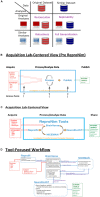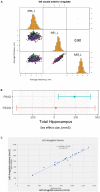Everything Matters: The ReproNim Perspective on Reproducible Neuroimaging
- PMID: 30792636
- PMCID: PMC6374302
- DOI: 10.3389/fninf.2019.00001
Everything Matters: The ReproNim Perspective on Reproducible Neuroimaging
Abstract
There has been a recent major upsurge in the concerns about reproducibility in many areas of science. Within the neuroimaging domain, one approach is to promote reproducibility is to target the re-executability of the publication. The information supporting such re-executability can enable the detailed examination of how an initial finding generalizes across changes in the processing approach, and sampled population, in a controlled scientific fashion. ReproNim: A Center for Reproducible Neuroimaging Computation is a recently funded initiative that seeks to facilitate the "last mile" implementations of core re-executability tools in order to reduce the accessibility barrier and increase adoption of standards and best practices at the neuroimaging research laboratory level. In this report, we summarize the overall approach and tools we have developed in this domain.
Keywords: data model; neuroimaging; publication; re-executability; reproducibility.
Figures


References
-
- Allard T. (2018). Down the Rabbit Hole. A 101 on Reproducible Workflows with Python. Available at: https://bitsandchips.me/Talks/PyCon\#/title.
-
- Dickie E., Hodge S., Craddock R., Poline J. B., Kennedy D. (2017). Tools matter: comparison of two surface analysis tools applied to the ABIDE dataset. Res. Ideas Outcomes 3:e13726 10.3897/rio.3.e13726 - DOI
Grants and funding
LinkOut - more resources
Full Text Sources
Molecular Biology Databases

